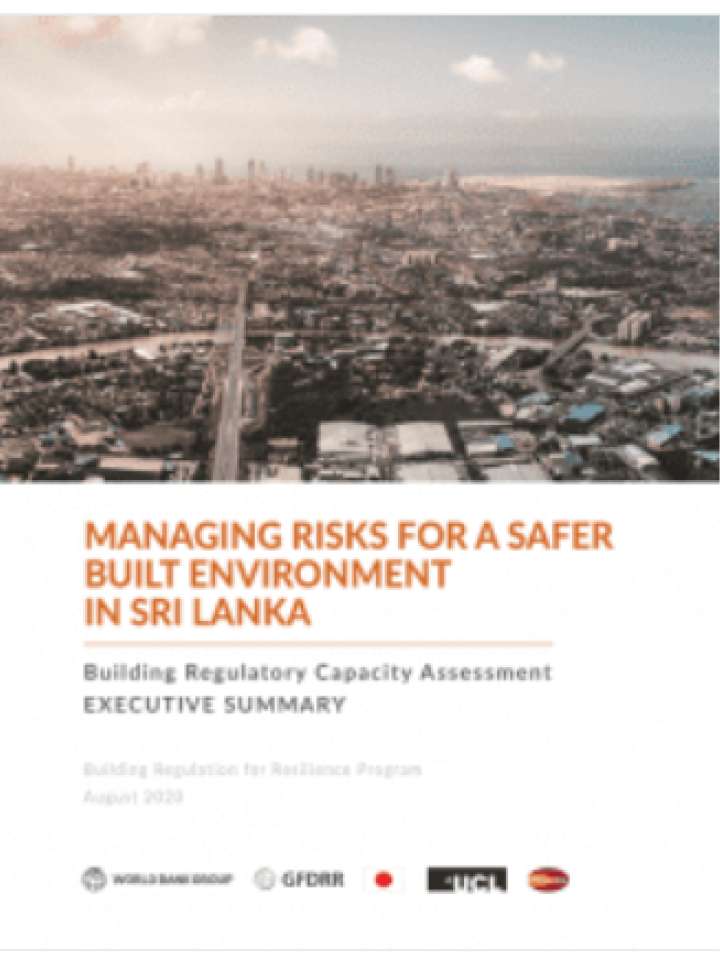Managing risks for a safer built environment in Sri Lanka: building regulatory capacity assessment
Executive Summary: The Accumulation of Risk in the Built Environment in Sri Lanka
Sri Lanka is a tropical island with a land area of 65,000 km2. The total population is estimated at 21.7 million people, with an estimated annual growth of approximately 1.1 percent. Unofficial estimates report that as much as 33 percent of Sri Lanka’s entire population may be living in urban areas. Patterns of sprawl and ribbon development characterise the rapid urban growth on the periphery of major cities and transport arteries. It is estimated that 50 percent of the poorest 40 percent of the country’s population live within 30 km of urban areas. Although this represents a significant socioeconomic issue for the country, urbanisation also has the potential to improve certain economic opportunities and living conditions. However, there are also several challenges associated with this shift and concentration of population. Over 80 percent of the buildings in Sri Lanka are non-engineered and are highly vulnerable to natural hazards. Many such houses are sited in areas prone to landslides and floods. Wetland encroachment has led to increased vulnerability of urban centres to flash floods.
Incremental construction practices have also led to incidents of building collapse, such as the 2017 building collapse in Colombo that killed one and injured 22 people. Sri Lanka is exposed to a wide range of hazards, particularly floods, landslides, fire, and cyclones (with associated high winds and storm surges). The country also has a loss earthquake hazard and is vulnerable to distal tsunami. However, the majority of development projects in the country do not consider these hazards in their design and siting.
In many ways, Sri Lanka is at a crossroads in its efforts to urbanise and develop toward upper-middle income status following the end of conflicts in 2009. Strong governance exists and great progress has been made in reducing poverty. Regulatory decisions made now will have a significant impact on the longterm safety, productivity and resilience of the urban built environment.
Explore further
